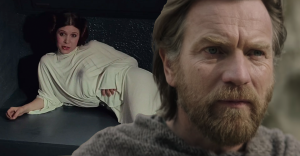Hunger Games Prequel: What Happened To Lucy Gray (Did She Survive?)

In the Hunger Games‘ prequel novel, A Ballad of Songbirds and Snakes, author Suzanne Collins leaves behind the mystery of Lucy Gray Baird’s final fate. Lucy Gray’s character was alluded to in the original Hunger Games trilogy, as District 12’s very first victor, although she’s not named at the time. The reason for this was due to her being a part of the 10th Annual Hunger Games, of which all the records were removed. However, the novel explores exactly what happened in the Games, which take place almost 64 years before the Hunger Games trilogy, and why Lucy Gray’s name was stricken out from history by a familiar name: Coriolanus Snow.
A Ballad of Songbirds and Snakes covers a chapter in President Snow’s teenage life. He’s made part of the Hunger Games’ first batch of mentors responsible for training the tributes who’re made up of students of the Academy rather than previous winners. During his time as a mentor, he develops a relationship with the District 12 tribute. Lucy Gray is a very different protagonist from Katniss. In the book’s third act, she returns to District 12 where she eventually meets Coriolanus Snow again. It is at this point that Lucy’s story takes a turn for the worse. Discontent spreads across the District’s rebels after a public hanging which results in a ripple effect leading to the death of the mayor’s daughter, Mayfair, and Lucy’s ex-boyfriend, Billy Taupe at Snow’s hands. Lucy is considered the prime suspect and is joined by Coriolanus Snow as she flees northward. Her fate, however, is left as a mystery at a cabin near District 12’s lake. Told from Snow’s perspective, he discovers the gun he used for the murder at the cabin. As Lucy leaves for a brief moment to gather katniss, Snow grows paranoid and believes that she will betray him. He starts to hunt her across the lake and the novel amps up his neurosis after he’s bitten by a snake under a scarf that Lucy seems to have left behind. Snow hears “The Hanging Tree” song being sung by her and echoed by a swarm of mockingjays, and it’s during this scene that his neurosis seems to crescendo, as he fires his gun wildly in the forest.
This chapter in A Ballad of Songbirds and Snakes appears to be left ambiguous intentionally as, from that point, Snow simply returns to the military base rather than confirming whether Lucy had been killed or not. As for Lucy herself, it seems that her fate was to disappear, both physically and metaphorically. With the lyrics of “The Hanging Tree” so aptly taunting Hunger Games‘ President Snow, there are several hints that Lucy planned to leave him. As a result, it’s equally possible that she might have survived or she might have ended up getting shot and lost to the forest. The more straightforward intent appears to be to leave Lucy’s fate to the reader’s imagination, in which case it’s interesting to consider where she might have gone after her encounter with Snow.

She could have survived in the forest for the rest of her life since she was adept at the Hunger Games and Snow had left behind the supplies that they had taken. Either that or she might even have escaped to District 13, which still would have been around. Some of A Ballad of Songbirds and Snakes’ readers also speculated that she might have a connection to the main trilogy. From her final scene being linked to katniss and the mockingjays to her connection to some of the locations that are very crucial to the protagonist from the trilogy, it’s possible that Lucy may have escaped to eventually become Katniss Everdeen’s grandmother.
Ultimately, it’s possible for the story to be taken either way. The Ballad of Songbirds and Snakes tells the story of Snow’s rise to power and its dismissal of Lucy is indicative of the manipulative and reductive nature of its main protagonist, Coriolanus Snow himself. The novel’s movie adaptation will begin production in 2022 and is sure to provide more answers.
About The Author

















